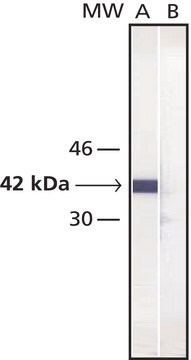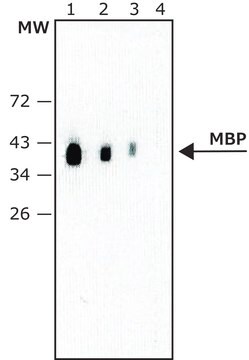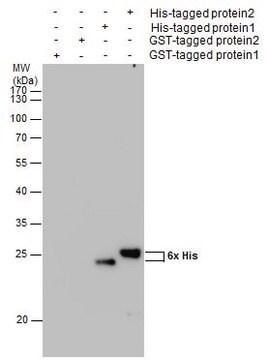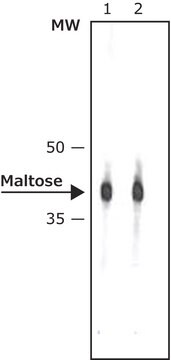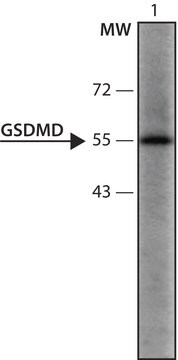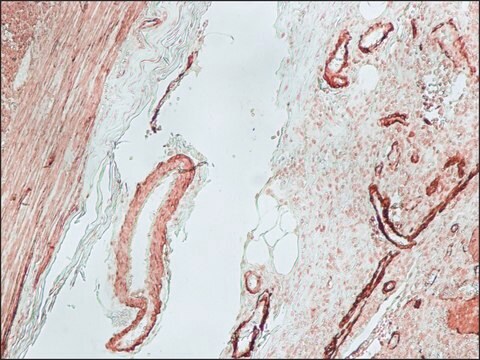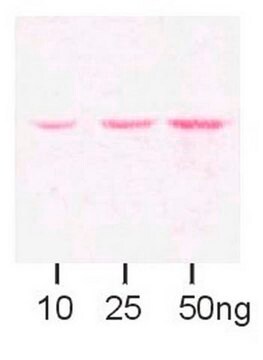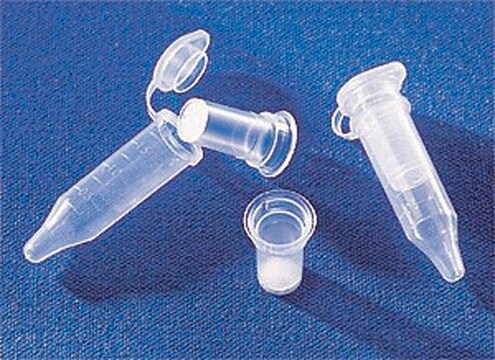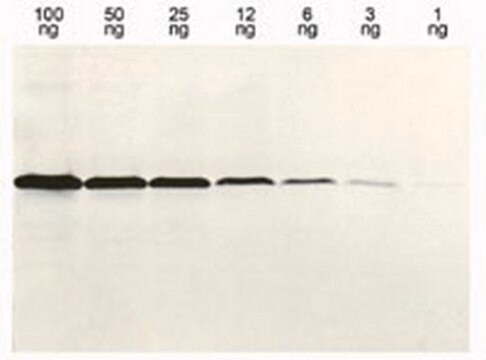M1321
Monoclonal Anti-Maltose Binding Protein antibody produced in mouse
clone MBP-17, purified immunoglobulin, buffered aqueous solution
Synonym(s):
Anti-MBP
Sign Into View Organizational & Contract Pricing
All Photos(1)
About This Item
Recommended Products
biological source
mouse
Quality Level
conjugate
unconjugated
antibody form
purified immunoglobulin
antibody product type
primary antibodies
clone
MBP-17, monoclonal
form
buffered aqueous solution
concentration
~2 mg/mL
technique(s)
dot blot: suitable
indirect ELISA: suitable
western blot: 0.05-0.1 μg/mL using purified recombinant MBP.
isotype
IgG1
shipped in
dry ice
storage temp.
−20°C
target post-translational modification
unmodified
General description
Monoclonal Anti-Maltose Binding Protein (MBP) (mouse IgG1 isotype) is derived from the hybridoma MBP-17 produced by the fusion of mouse myeloma cells and splenocytes from BALB/c mice immunized with a purified recombinant MBP fusion protein.
The antibody recognizes native as well as denatured-reduced forms of purified MBP and MBP fusion proteins.
Immunogen
Purified, recombinant MBP fusion protein.
Application
Monoclonal Anti-Maltose Binding Protein antibody produced in mouse has been used in:
- immunoblotting
- dot blot
- luminometric immunoassay
- enzyme linked immuno sorbent assay (ELISA)
Monoclonal Anti-Maltose Binding Protein antibody produced in mouse was used in agarose binding assay for the detection of activation-induced cytidine deaminase-MBP complex.
Biochem/physiol Actions
Maltose binding protein (MBP) is a periplasmic binding protein that is important for nutrient uptake and chemotaxis of Escherichia coli.
Maltose binding protein (MBP) tag creates a stable fusion product, that does not appear to interfere with the bioactivity of the protein or with the biodistribution of the MBP tagged product. It facilitates the detection, isolation and purification of the proteins.
Physical form
Solution in 0.01 M phosphate buffered saline, pH 7.4, containing 15 mM sodium azide.
Disclaimer
Unless otherwise stated in our catalog or other company documentation accompanying the product(s), our products are intended for research use only and are not to be used for any other purpose, which includes but is not limited to, unauthorized commercial uses, in vitro diagnostic uses, ex vivo or in vivo therapeutic uses or any type of consumption or application to humans or animals.
Not finding the right product?
Try our Product Selector Tool.
related product
Product No.
Description
Pricing
Storage Class Code
10 - Combustible liquids
WGK
nwg
Flash Point(F)
Not applicable
Flash Point(C)
Not applicable
Personal Protective Equipment
dust mask type N95 (US), Eyeshields, Gloves
Choose from one of the most recent versions:
Already Own This Product?
Find documentation for the products that you have recently purchased in the Document Library.
Wubei Zong et al.
The New phytologist, 229(3), 1635-1649 (2020-10-23)
Rice (Oryza sativa) is a short-day (SD) plant originally having strong photoperiod sensitivity (PS), with SDs promoting and long days (LDs) suppressing flowering. Although the evolution of PS in rice has been extensively studied, there are few studies that combine
Steffen Frey et al.
PloS one, 10(4), e0125099-e0125099 (2015-04-30)
During autophagy, members of the ubiquitin-like Atg8 protein family get conjugated to phosphatidylethanolamine and act as protein-recruiting scaffolds on the autophagosomal membrane. The Atg4 protease produces mature Atg8 from C-terminally extended precursors and deconjugates lipid-bound Atg8. We now found that
A rapid solubility-optimized screening procedure for recombinant subtilisins in E. coli
Bjerga GEK, et al.
Journal of Biotechnology, 222, 38-46 (2016)
Andrew C Miklos et al.
PloS one, 8(10), e74969-e74969 (2013-10-15)
Cellular signaling involves a cascade of recognition events occurring in a complex environment with high concentrations of proteins, polysaccharides, and other macromolecules. The influence of macromolecular crowders on protein binding affinity through hard-core repulsion is well studied, and possible contributions
József Dobó et al.
Applied and environmental microbiology, 76(3), 891-899 (2009-12-17)
Recently, we have demonstrated that the 26-47 segment of Salmonella enterica serovar Typhimurium flagellin is capable of mediating flagellar export. In order to reveal whether other parts of the N-terminal region have any significant influence on secretion, a series of
Our team of scientists has experience in all areas of research including Life Science, Material Science, Chemical Synthesis, Chromatography, Analytical and many others.
Contact Technical Service